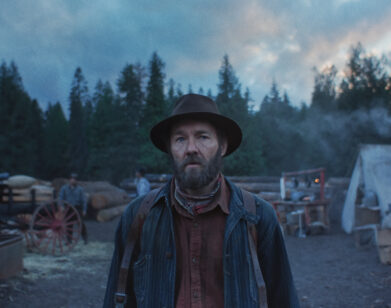Ron Galella: Not Just Like Us

Smash His Camera, a new documentary about pioneering paparazzo Ron Galella, takes its title from a directive Jackie Onassis (in Galella’s recounting) once gave a body guard, right after Galella snapped her picture. Good for her, right? But Leon Gast’s provocative film, like the 1973 lawsuit that ended with Galella being served a restraining order, insists it’s not that simple. What about the photographer’s First Amendment rights? What makes his work more illicit than a photojournalist’s? Are celebrities who complain about paparazzi really unwilling subjects?
The film premieres tonight at 9 PM on HBO, which also recently acquired Adrian Grenier’s Teenage Paparazzo, another documentary that grapples with the same subject. Grenier’s directorial debut explores the connective tissue between photographers, celebrities, blogs and tabloids, and the insatiable public appetite for celebrity gossip that fuels the whole thing. It makes for more harrowing viewing than the Galella doc, and not only because it devotes a lot of time to Paris Hilton and Lindsay Lohan. The business of snapping celebrity candids is a lot nastier now than it was in Galella’s era.
“Today it’s just crazy, the way gangs of photographers shoot,” Galella said by phone from his home in New Jersey. “They want to eliminate the competition. It’s all for money. I’m glad I don’t do it now.”
“Their motivation is much different than mine,” he continued. “They’re looking for negatives, for the star to trip or whatever. It’s bad. I never looked for that.” In Gast’s film and elsewhere, Galella refers to his famous picture of the former First Lady turning toward the camera, her hair blowing in the wind, as his “Mona Lisa shot.”
It’s safe to say Galella gave more to the world with that image (and definitely got less money for it) than the people responsible for the Britney crotch shots.
That’s the world Teenage Paparazzo depicts, one in which anyone can pick up a digital camera and go to work. A startling number of paparazzi have criminal records. And none of those whom Grenier interviews, or tries to interview–not even the depressingly cutthroat 13-year-old whose cuteness gives him an edge over his more seasoned counterparts–has a hint of the teddy-bear quality that make Galella an endearing film subject. Even if Galella’s stalker tactics made him pretty hated in his day, too.
Galella’s work will be on view through June 30 at Clic Gallery, located at 424 Broome Street in New York.






